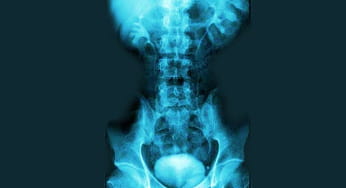
The embarrassment of urinary incontinence can cause isolation and loneliness, and reduce independence and self-confidence. It's one of the top reasons why seniors move to nursing homes. A common treatment is the injection of collagen into the bladder sphincter to add bulk to it, but the collagen is eventually absorbed and sometimes causes an allergic reaction.
The Center for Interdisciplinary Research in Female Pelvic Health (CIRPH) is co-directed by McGowan Institute affiliated faculty member Pamela A. Moalli, MD, PhD, with the overarching goal to contribute insights into the pathogenesis, diagnosis, and treatment of pelvic organ prolapse and urinary incontinence. The Center’s main areas of research focus are:
- The use of biomaterials in urogynecologic procedures
- Defining mechanisms of failure after reconstructive pelvic surgeries
- Defining mechanisms of maternal birth injury
Dr. Moalli and the research team has expertise in cellular and molecular biology including both traditional and high throughput platforms, soft tissue mechanics, mechanobiology, tissue regeneration, and immunomodulation.
McGowan Institute researchers discovered a better way to restore urinary control, and the approach was studied in 2006 in women at two Canadian centers. Researchers take a small muscle biopsy from the thigh of each woman, isolate the stem cells, and nurture them in the lab as they multiply. Within a few weeks there are enough cells to be injected into the bladder sphincter. McGowan Institute-developed stem cell therapy (now licensed by Cook MyoSite, Inc.) is now in a clinical trial to treat stress-induced urinary incontinence.
Another common treatment for urinary incontinence is to fashion a new support for the bladder, which can lose some of its support after pregnancy and childbirth. Traditionally, the new support material comes from tissue in the patient's abdomen, but this can add time and expense to the operation. Other options are donor materials, which can be difficult to obtain, or synthetics, which can be rejected or cause infection. Instead, UPMC physicians use a regenerative medicine treatment called SIS (Small Intestinal Submucosa), a natural scaffold that degrades as it is replaced by strong, healthy new tissue.
Incontinence: A Woman's Little Secret
More than 13 million Americans have incontinence, and women are twice as likely to have it as men, according the Agency for Healthcare Research and Quality. About 25% to 45% of women suffer from urinary incontinence, defined as leakage at least once in the past year. The rates of urinary incontinence increase with age: 20%-30% of young women, 30%-40% of middle-aged women, and up to 50% of older women suffer from urinary incontinence. Read more about women and incontinence from WebMD.
Additional Resources
Additional Resources
The work described here—unless noted otherwise—are research projects in various stages of maturity.
For clinically available therapies, please follow the link below.
How Do I Get Treatment?
Expert urology care is available at Urology Services at UPMC.

















